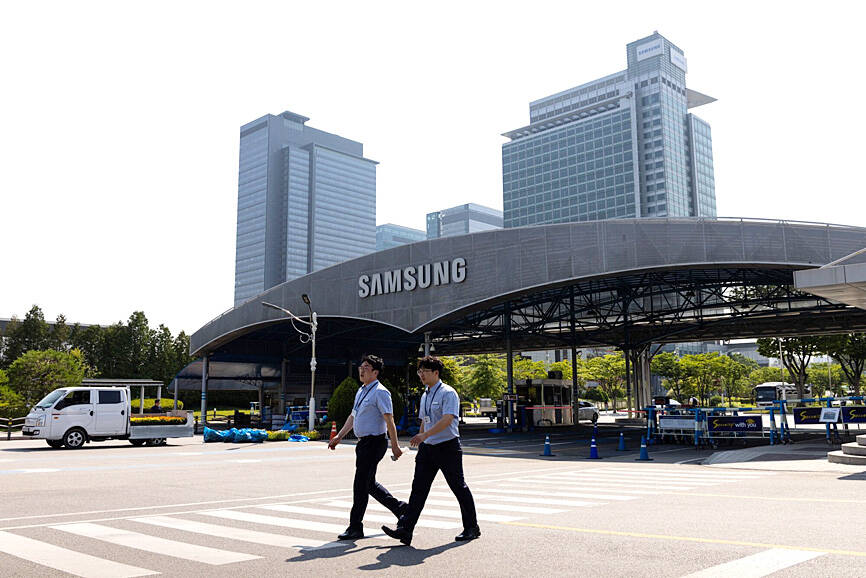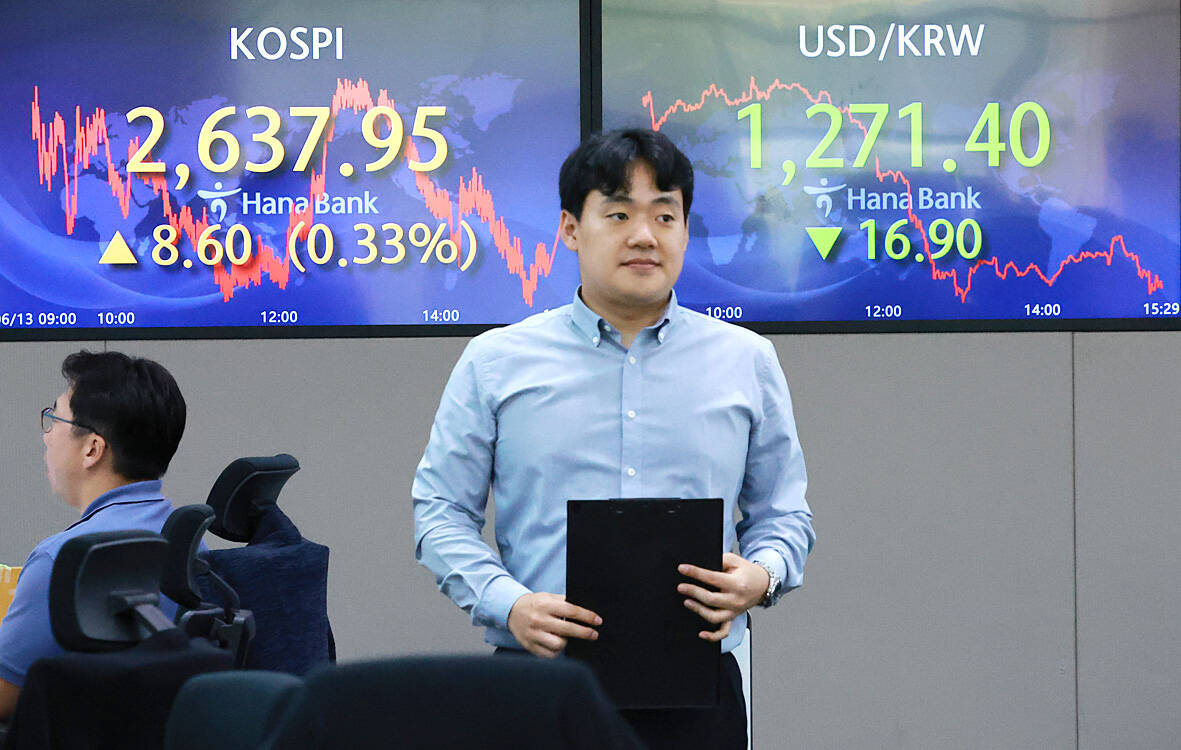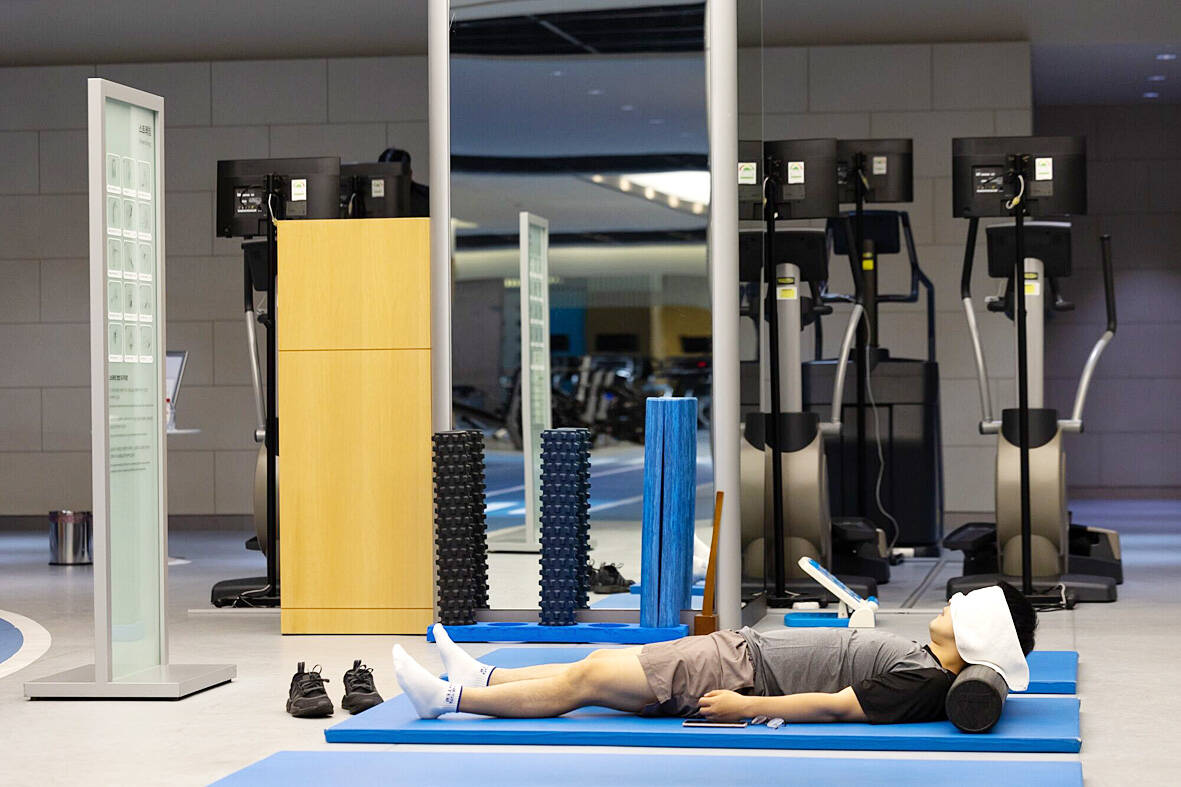‘Working during my holidays and weekends became a routine,” says Lee Sang-hyuk as he describes the culture of overtime at the large pharmaceutical company he used to work for near Seoul. “I gradually realized that my life and health were deteriorating due to excessive hours. I had no energy, and neglected my personal relationships.”
He developed back pain from long hours sitting at his desk, and said he became anxious and lethargic. “During the few times I was able to meet my friends, I couldn’t even enjoy that, as all I could think about was work. I thought I was the problem,” the 35-year-old said.
What Lee did next would once have seemed extraordinary for an employee in South Korea’s culture of long working hours: he quit.

Photo: AFP
His story is not an isolated case. It represents a broader movement taking shape in South Korea among a generation of determined youth rebelling against the suffocating grip of the country’s rigid work culture. The “MZ generation,” as they are referred to in South Korea, encompassing both generation Z and millennials, is at the heart of a potential generational shift away from a culture of overwork.
69-HOUR WORK WEEK
The last straw for some came in March with the government’s proposal to revise the working hours system, permitting up to 69 hours a week. The current law allows the basic 40-hour working-week principle to be applied to companies, with overtime limited to a maximum of 12 hours, though exceptions do exist.

Photo: Bloomberg
The plan was presented as a solution to labor market challenges that offered flexibility to companies by allowing them to calculate average working hours over longer periods of time. Prior to becoming president, Yoon Suk-yeol, a conservative who is seen as pro-business, suggested that people be allowed to work 120 hours a week if necessary.
It was also promoted as a way to benefit working women by enabling them to accumulate more overtime hours, which could be exchanged for time off in the future, addressing family and caregiving responsibilities in a country that already has the lowest birthrate in the world.
But the proposal sparked a backlash from young people, unions and opposition politicians, forcing the government to rethink its decision. A spokesperson for the main opposition Democratic party called the Yoon administration “shameless”, and said the country was returning to a “history of labor hell.”

Photo: EPA-EFE
Young workers demonstrated against an “irresponsible and inhumane policy detached from reality,” and the policy was widely criticized on social media.
The government appeared to quickly back down, with Yoon’s press secretary, Kim Eun-hye, promising to listen to workers’ opinions more closely in the future, especially those of the MZ generation. However, a replacement policy has yet to be put forward, and there are fears that the 69-hour proposal will return in some form later this year.
South Korea is one of the countries with the longest working hours in the industrialized world. This is often seen as a legacy of its remarkable economic growth. Historically, people stayed with a single company until retirement, as this provided job security and a guaranteed income. This arrangement was frequently accompanied by the expectation of long hours and dedication to the company.

Photo: Bloomberg
“This cultural belief continues to be perpetuated today,” Lee says of his parents’ generation, who still believe in self-sacrifice for the sake of family and country. “At first, my parents told me to endure it to gain more for my career development.
“But when I finally did make the decision to leave, they readily supported me and appreciated that I had made a courageous choice to pursue a better life for myself.”
SUICIDE RISK
Excessive work hours have been linked to an increased risk of suicide in South Korea. It is the leading cause of death for people aged 10 to 39.
“Young people have learned how harmful working long hours can be,” according to Kim Ji-hyun, head of policy at the Youth Community Union, an activist group that advocates for better working conditions for young adults.
“They have realized that, even when they work diligently in their current workplace, the company’s benefits and profits do not always reach the employees.”
Young people are becoming increasingly anxious about committing to a single company for a long period, especially given the rising costs of living. A survey by JobKorea, a job information portal, revealed that 55 percent of employees from the MZ generation have no intention of pursuing management positions, while 47 percent said they were preparing to move to another company.
“They may have seen family members, relatives or friends who have to survive on their own, even after getting sick from overwork. It’s natural for them to protest against something they know is wrong,” says Kim.
Lee Myung-ha, 36, worked for a government agency, and was often on round-the-clock duty, conducting international business. She sometimes worked until 4am, and felt she was always under pressure to prove she was doing her best.
“I felt I was not myself,” she said. As the youngest member of her team, she was also expected to take on additional time-consuming tasks such as organizing birthday parties and managing office supplies. She says she was never compensated for these extra duties.
NOT PAID OVERTIME
A survey by Gapjil 119, a civic organization that campaigns against workplace abuses of power and mistreatment, found that 59 percent of respondents who worked overtime said they were not paid for it. “Excluding workplace harassment, the most common query we receive relates to wages and working hours,” said Gapjil 119’s executive director, Oh Jin-ho.
He highlighted the lack of legal provisions for accurately tracking the hours employees work, particularly those who sign a contract with a “blanket wage” system, in which overtime is factored into the salary.
This system, he says, is open to abuse, with employers demanding extra hours from staff who find it difficult to refuse.
“And although Korean labor law requires overtime to be compensated at 1.5 times the regular rate, many cases arise where such allowances are not paid,” Oh said.
The 69-hour proposal, said Oh, was akin to legislating the promotion of death from overwork, a cause of death that officially claims about 500 lives each year, though the true figure is likely to be higher.
Politicians are debating legislation to address the misuse of the blanket wage system, and campaigners are calling for its abolition. A recent survey by South Korea’s labor ministry found young people’s desired working week was 42 hours.
Almost half of the MZ generation respondents would not take a job that required them to work more hours than they wanted, even if they were compensated for the extra hours.
A labor ministry official said that the government acknowledges public concerns and has been gathering feedback from different sectors.
“We will also conduct a nationwide survey and [run] focus groups, and intend to announce a comprehensive revised plan for the work-hour system later this year,” the official said.
Lee Myung-ha, who now works 30 hours a week as a manager in a Seoul wine shop, has discovered other pleasures in life after leaving her office job.
“I can negotiate holidays better, meet my friends and learn new things,” she says, though she admits she is only able to do this because she can save money by living at home with her parents.
At the pharmacy he now runs in Bucheon, near Seoul, Lee says a balanced life is essential. He believes that South Korea needs a more efficient work culture to remain globally competitive.
“The first step is properly limiting working hours to ensure sufficient rest time for workers,” he says. “To have a healthy and happy life is to be in control of one’s life.”

As I finally slid into the warm embrace of the hot, clifftop pool, it was a serene moment of reflection. The sound of the river reflected off the cave walls, the white of our camping lights reflected off the dark, shimmering surface of the water, and I reflected on how fortunate I was to be here. After all, the beautiful walk through narrow canyons that had brought us here had been inaccessible for five years — and will be again soon. The day had started at the Huisun Forest Area (惠蓀林場), at the end of Nantou County Route 80, north and east

Specialty sandwiches loaded with the contents of an entire charcuterie board, overflowing with sauces, creams and all manner of creative add-ons, is perhaps one of the biggest global food trends of this year. From London to New York, lines form down the block for mortadella, burrata, pistachio and more stuffed between slices of fresh sourdough, rye or focaccia. To try the trend in Taipei, Munchies Mafia is for sure the spot — could this be the best sandwich in town? Carlos from Spain and Sergio from Mexico opened this spot just seven months ago. The two met working in the

Exceptions to the rule are sometimes revealing. For a brief few years, there was an emerging ideological split between the Democratic Progressive Party (DPP) and Chinese Nationalist Party (KMT) that appeared to be pushing the DPP in a direction that would be considered more liberal, and the KMT more conservative. In the previous column, “The KMT-DPP’s bureaucrat-led developmental state” (Dec. 11, page 12), we examined how Taiwan’s democratic system developed, and how both the two main parties largely accepted a similar consensus on how Taiwan should be run domestically and did not split along the left-right lines more familiar in

A six-episode, behind-the-scenes Disney+ docuseries about Taylor Swift’s Eras Tour and Rian Johnson’s third Knives Out movie, Wake Up Dead Man, are some of the new television, films, music and games headed to a device near you. Also among the streaming offerings worth your time this week: Chip and Joanna Gaines take on a big job revamping a small home in the mountains of Colorado, video gamers can skateboard through hell in Sam Eng’s Skate Story and Rob Reiner gets the band back together for Spinal Tap II: The End Continues. MOVIES ■ Rian Johnson’s third Knives Out movie, Wake Up Dead Man